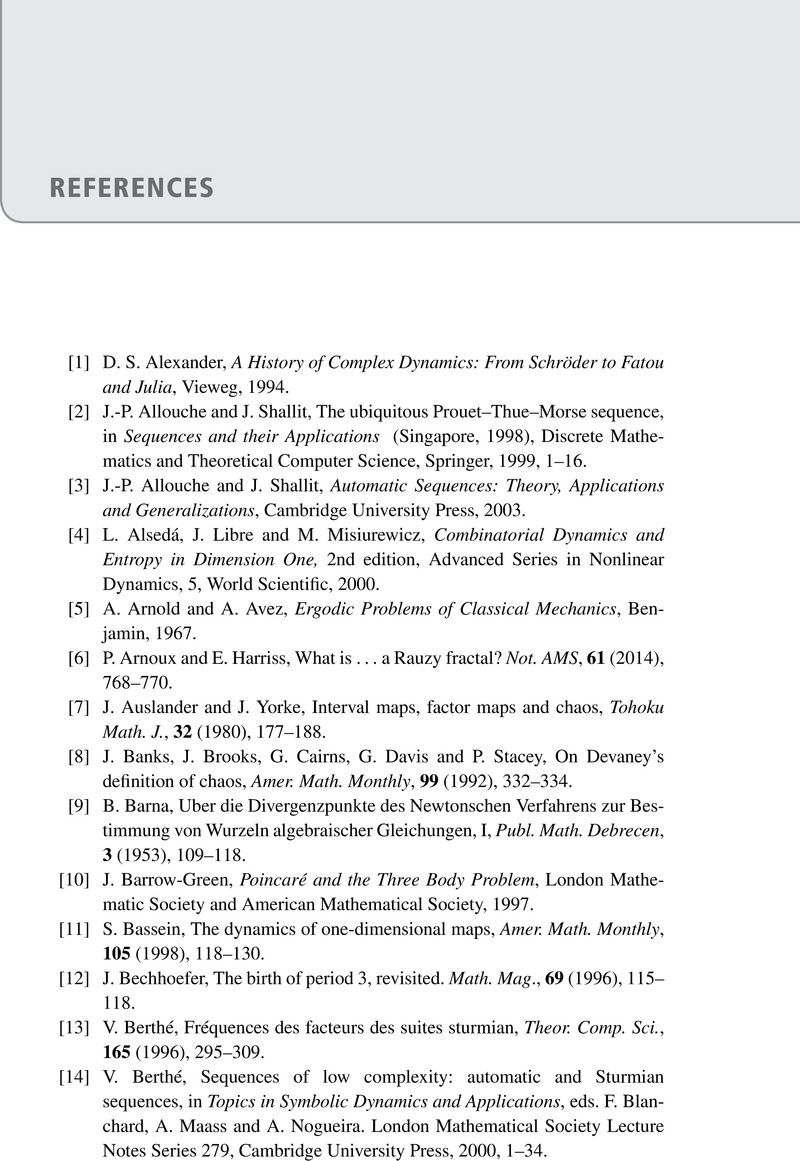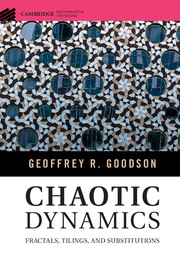Book contents
- Frontmatter
- Dedication
- Contents
- Preface
- 1 The Orbits of One-Dimensional Maps
- 2 Bifurcations and the Logistic Family
- 3 Sharkovsky's Theorem
- 4 Dynamics on Metric Spaces
- 5 Countability, Sets of Measure Zero and the Cantor Set
- 6 Devaney's Definition of Chaos
- 7 Conjugacy of Dynamical Systems
- 8 Singer's Theorem
- 9 Conjugacy, Fundamental Domains and the Tent Family
- 10 Fractals
- 11 Newton's Method for Real Quadratics and Cubics
- 12 Coppel's Theorem and a Proof of Sharkovsky's Theorem
- 13 Real Linear Transformations, the Hénon Map and Hyperbolic Toral Automorphisms
- 14 Elementary Complex Dynamics
- 15 Examples of Substitutions
- 16 Fractals Arising from Substitutions
- 17 Compactness in Metric Spaces and an Introduction to Topological Dynamics
- 18 Substitution Dynamical Systems
- 19 Sturmian Sequences and Irrational Rotations
- 20 The Multiple Recurrence Theorem of Furstenberg and Weiss
- Appendix A Theorems from Calculus
- Appendix B The Baire Category Theorem
- Appendix C The Complex Numbers
- Appendix D Weyl's Equidistribution Theorem
- References
- Index
- References
References
Published online by Cambridge University Press: 30 January 2019
- Frontmatter
- Dedication
- Contents
- Preface
- 1 The Orbits of One-Dimensional Maps
- 2 Bifurcations and the Logistic Family
- 3 Sharkovsky's Theorem
- 4 Dynamics on Metric Spaces
- 5 Countability, Sets of Measure Zero and the Cantor Set
- 6 Devaney's Definition of Chaos
- 7 Conjugacy of Dynamical Systems
- 8 Singer's Theorem
- 9 Conjugacy, Fundamental Domains and the Tent Family
- 10 Fractals
- 11 Newton's Method for Real Quadratics and Cubics
- 12 Coppel's Theorem and a Proof of Sharkovsky's Theorem
- 13 Real Linear Transformations, the Hénon Map and Hyperbolic Toral Automorphisms
- 14 Elementary Complex Dynamics
- 15 Examples of Substitutions
- 16 Fractals Arising from Substitutions
- 17 Compactness in Metric Spaces and an Introduction to Topological Dynamics
- 18 Substitution Dynamical Systems
- 19 Sturmian Sequences and Irrational Rotations
- 20 The Multiple Recurrence Theorem of Furstenberg and Weiss
- Appendix A Theorems from Calculus
- Appendix B The Baire Category Theorem
- Appendix C The Complex Numbers
- Appendix D Weyl's Equidistribution Theorem
- References
- Index
- References
Summary

- Type
- Chapter
- Information
- Chaotic DynamicsFractals, Tilings, and Substitutions, pp. 391 - 397Publisher: Cambridge University PressPrint publication year: 2016

